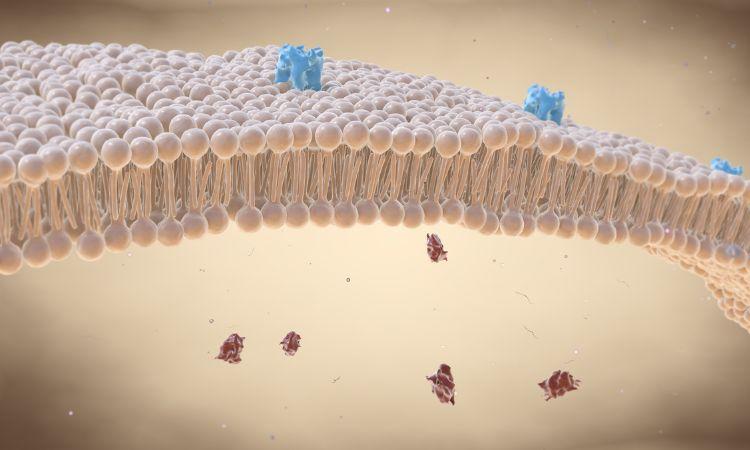The global PVDF membrane market size reached approximately USD 858.94 million in 2023. The market is further projected to grow at a CAGR of 8% between 2024 and 2032, reaching a value of USD 1,720.18 million by 2032. These impressive figures underscore the significance of PVDF (Polyvinylidene fluoride) membranes in various industries, particularly in water filtration systems. As the demand for clean and purified water continues to rise, PVDF membranes have emerged as a pivotal technology offering numerous advantages that address the challenges associated with water treatment and purification.
In this comprehensive blog post, we will delve into the world of PVDF membranes, exploring their properties, applications, and the myriad of advantages they bring to water filtration systems. Whether you are involved in the water treatment industry, researching filtration solutions, or simply curious about the role of PVDF membranes in improving water quality, this guide will provide valuable insights into this innovative technology.
Properties of PVDF Membranes
To understand why PVDF membranes are gaining prominence in water filtration, it’s crucial to first grasp their inherent properties.
-
Overview of PVDF Material Characteristics: PVDF, short for Polyvinylidene fluoride, is a synthetic polymer known for its exceptional chemical resistance, mechanical strength, and thermal stability. These properties make it an ideal choice for demanding applications, including water filtration.
-
Porosity and Pore Size Distribution: PVDF membranes can be engineered to have precise porosity and pore size distributions. This tunability allows for the customization of membranes to suit specific filtration requirements, ensuring efficient removal of contaminants.
-
Chemical Resistance and Durability: One of the standout features of PVDF membranes is their resistance to a wide range of chemicals and solvents. This property is particularly advantageous in water treatment processes where varying pH levels and chemical compositions are encountered.
-
Thermal Stability: PVDF membranes can withstand a broad range of temperatures, making them suitable for both hot and cold water filtration applications. This thermal stability contributes to their longevity and reliability.
Applications of Water Filtration Systems
Before delving into the advantages of PVDF membranes, it’s important to recognize the diverse applications of water filtration systems where these membranes play a pivotal role:
-
Drinking Water Purification: Providing safe and clean drinking water is a global priority. PVDF membranes are utilized in municipal water treatment plants to remove impurities and ensure the delivery of potable water to communities.
-
Wastewater Treatment: The treatment of wastewater is essential for environmental protection. PVDF membranes are deployed in wastewater treatment facilities to separate pollutants and contaminants, reducing the environmental impact of wastewater discharge.
-
Industrial Processes: Various industries, including pharmaceutical, food, and beverage, rely on water filtration to maintain product quality and meet regulatory standards. PVDF membranes are used to achieve precise filtration in these manufacturing processes.
-
Medical Device Manufacturing: The medical industry demands high-purity water for equipment sterilization and the production of medical devices. PVDF membranes are trusted for their reliability in ensuring the quality and safety of medical products.
Advantages of PVDF Membranes in Water Filtration
Now, let’s delve into the advantages that make PVDF membranes stand out in the realm of water filtration:
-
High Chemical Resistance and Compatibility: PVDF membranes exhibit remarkable chemical resistance, making them suitable for water sources with varying pH levels and chemical compositions. This resistance minimizes the risk of membrane degradation and ensures consistent filtration performance.
-
Excellent Hydrophobic Properties: PVDF membranes possess inherent hydrophobicity, which means they repel water molecules. This property significantly reduces fouling, a common issue in filtration systems where contaminants accumulate on the membrane surface. As a result, PVDF membranes require less frequent cleaning and maintenance, contributing to operational efficiency and cost savings.
-
Superior Mechanical Strength: The mechanical strength of PVDF membranes allows them to withstand high pressure during filtration processes and backwashing cycles. This durability ensures the membrane’s longevity and reliability, reducing downtime and replacement costs.
-
Longevity and Reliability: PVDF membranes are known for their longevity. When properly maintained, they can outlast other membrane materials, providing a cost-effective and sustainable solution for water filtration needs.
Case Studies and Real-World Examples
To illustrate the practical benefits of PVDF membranes, let’s explore a few real-world case studies and examples:
-
Municipal Water Treatment: In a major metropolitan area, a water treatment plant adopted PVDF membranes to improve the efficiency of their filtration process. The result was a significant reduction in maintenance downtime and an increase in the availability of clean drinking water to residents.
-
Wastewater Treatment Facility: A wastewater treatment facility in an industrial zone implemented PVDF membranes to enhance the quality of treated effluent. The membranes effectively removed contaminants, ensuring compliance with environmental regulations and minimizing the facility’s ecological footprint.
-
Pharmaceutical Manufacturing: A pharmaceutical company integrated PVDF membranes into their production process, ensuring the consistent purity of their products. This step not only met regulatory requirements but also reduced product wastage due to contamination.
Environmental Benefits
The advantages of PVDF membranes extend beyond their technical characteristics. They also offer significant environmental benefits:
-
Reduced Chemical Usage and Waste: The chemical resistance of PVDF membranes reduces the need for harsh chemical cleaning agents, minimizing chemical waste generation and the associated environmental impact.
-
Energy Efficiency in Water Treatment Processes: PVDF membranes contribute to energy efficiency by requiring lower transmembrane pressure during filtration. This translates to reduced energy consumption in water treatment plants, lowering operating costs and carbon emissions.
-
Sustainable and Eco-Friendly Filtration Solutions: As the world strives for sustainability, PVDF membranes align with the global push for eco-friendly technologies. Their longevity and reduced chemical usage contribute to a more sustainable approach to water treatment and filtration.
Read More Articles
Challenges and Considerations
While PVDF membranes offer numerous advantages, it’s essential to be aware of potential challenges and considerations:
-
Cost Considerations: PVDF membranes may have a higher initial cost compared to some other membrane materials. However, their durability and long lifespan often justify the investment over time.
-
Proper Installation and Maintenance: Achieving optimal performance from PVDF membranes requires proper installation and maintenance. Neglecting routine maintenance can lead to reduced efficiency and potentially costly repairs.
-
Compatibility with Specific Water Sources: While PVDF membranes are versatile, their effectiveness can vary depending on the characteristics of the water source. It’s crucial to assess compatibility before selecting PVDF membranes for a specific application.
Future Developments and Trends
The PVDF membrane industry is continually evolving, with ongoing developments and emerging trends:
-
Emerging Technologies and Innovations: Researchers are exploring new techniques to enhance the properties of PVDF membranes further. This includes innovations in membrane surface modifications, nanotechnology applications, and advanced manufacturing processes.
-
Potential Applications in New Industries: As PVDF membrane technology advances, new industries may find innovative ways to incorporate these membranes into their processes, opening up new opportunities for growth and application.
Conclusion
In conclusion, the global PVDF membrane market is on a remarkable growth trajectory, driven by the increasing demand for clean and purified water in various industries. The advantages of PVDF membranes, including their high chemical resistance, hydrophobic properties, mechanical strength, longevity, and sustainability, position them as a leading choice for water filtration systems.
As the world faces pressing challenges related to water quality and environmental sustainability, PVDF membranes offer a promising solution. Their role in ensuring the availability of safe drinking water, efficient wastewater treatment, and high-purity industrial processes cannot be understated. Moreover, their environmental benefits align with global efforts to reduce the environmental footprint of water treatment operations.
As the market for PVDF membranes continues to expand, it is essential for industry professionals, researchers, and decision-makers to stay informed about the latest developments and opportunities in this field. By embracing the advantages of PVDF membranes, we can work towards a future where clean and sustainable water resources are accessible to all.



